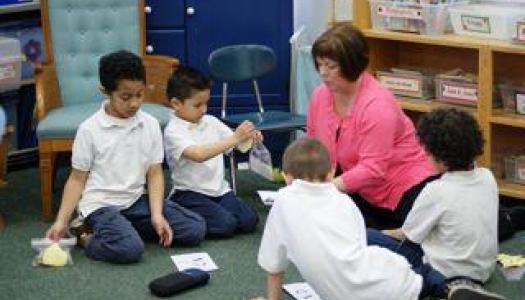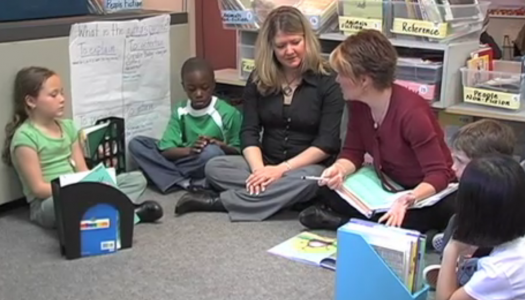The Negative Effect of Walk to Read
Join Our Community
Access this resource now. Get up to three resources every month for free.
Choose from thousands of articles, lessons, guides, videos, and printables.
Some call it Walk to Read. Others call it Across Grade Grouping. Whatever one calls it, we are asked everywhere we go about grouping students by reading level and sending them to another teacher to receive literacy instruction.
As with most all things we do in our classrooms, we turned to research, our own beliefs and reflective practices, and careful student observations to guide our thinking and practice.
In her book, RTI from All Sides, Dr. Mary Howard speaks to the practice of schools forming groups of students from several classrooms or grade levels. Dr. Howard calls this practice a dangerous prospect, as it is easy for teachers to relinquish responsibility and can easily turn into fixed-ability groups. She goes on to say that this approach is strongly discouraged. Dr. Howard outlines that we must minimize the number of adults working with an individual child. Too often children become confused because they receive conflicting instruction.
Peter Johnston, Richard Allington and Peter Afflerbach were some of the first to write about the challenge surrounding students who are sent to other teachers for instruction. Since 1984 they have touted the importance of curricular coherence, the act of aligning the instruction for children, so it isn’t a guessing game for them to figure out what each instructor is trying to teach in an effort to put the pieces together to become better readers. Richard Allington is frequently heard speaking strongly against this practice as well.

Years ago I was a teacher who was told by the administration that we were going to level our students and have them Walk to Read. One of my colleagues was going to take the top third of the grade level, another would take the middle third, and I was to take the bottom third. Given my background in special education, I was not concerned about the group in my charge being the lowest readers. My immediate worry was the fact that as teachers, we need to teach literacy all day long, across all subject areas. How would I know what my students needed or what they were working on as readers when most of them were away from me during literacy instruction? It was hard enough to connect with my colleagues, much less find the time to share the strategies being taught for each of my students in their rooms.
Another concern was that even though the students were grouped as the lowest of the grade level, they did not all read at the same level, and their needs were wildly varied. Some needed goals of comprehension, others needed to work on accuracy, some needed fluency, some needed to expand their vocabulary, and some needed it all.
Through careful observation of our students, watching the results we were getting, and standing on the shoulders of the research, we quickly abandoned the practice, took our own students back and moved forward with a much greater degree of success.
If you are being asked to partake in this type of structure, we cannot encourage you enough to work together with your administration to read the current research together and look carefully at the needs of your students. The children will benefit as a result.







